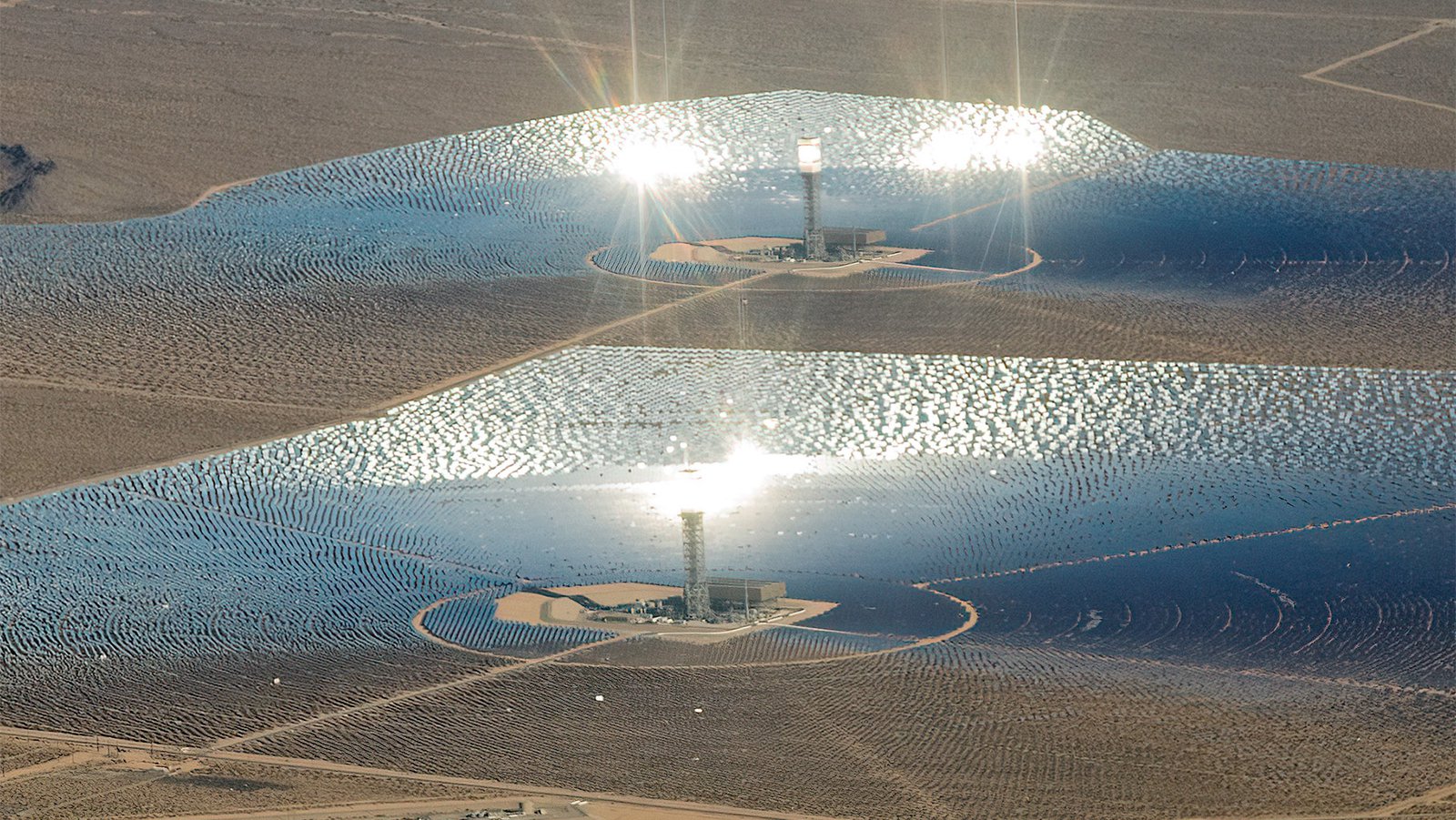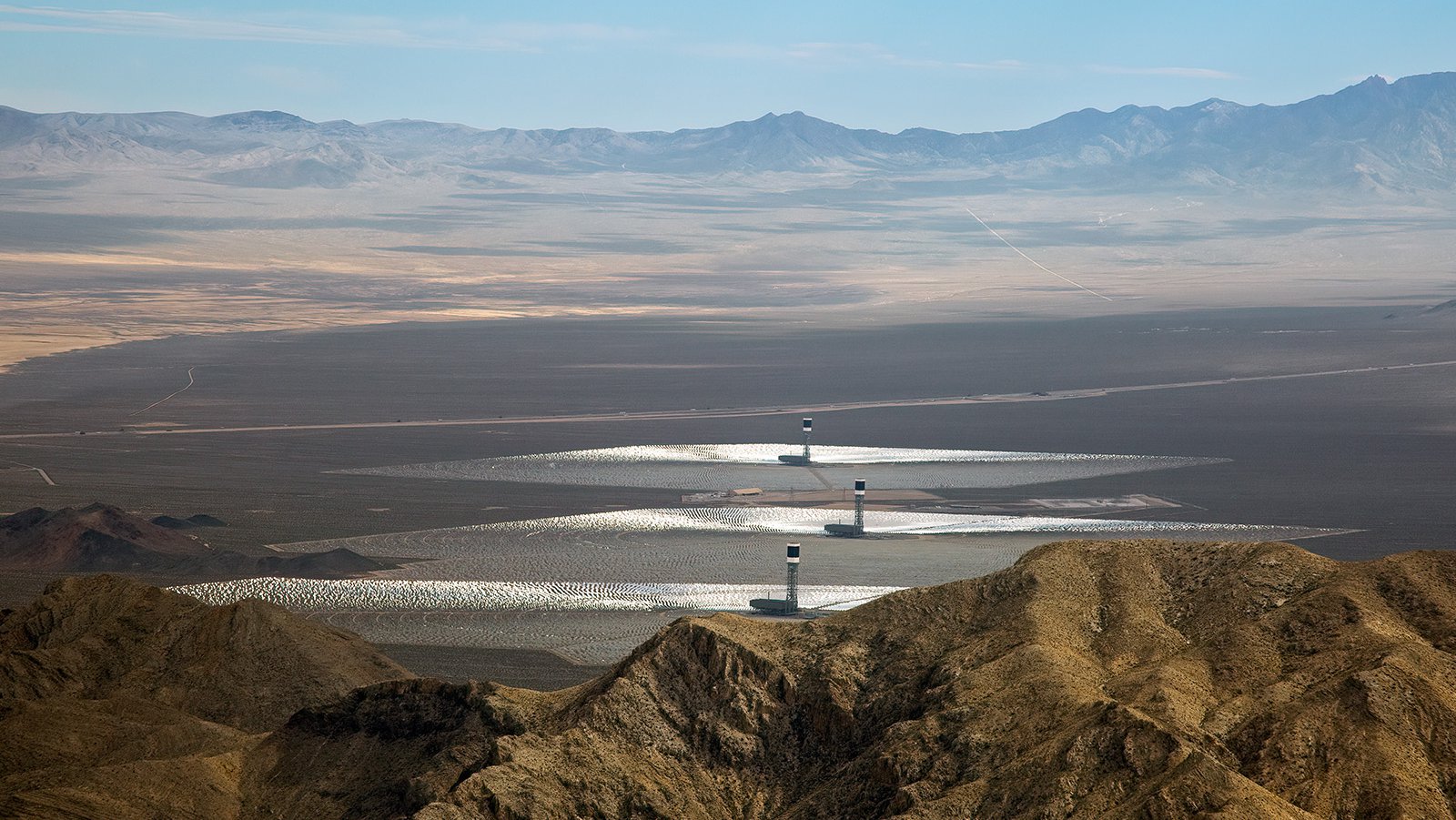
The Ivanpah Solar Electric Generating System, located in California’s Mojave Desert, is one of the largest concentrated solar power projects in the world. Powering up to 140,000 homes, it demonstrates the feasibility of large-scale solar energy. But despite significant advancements in technology and safety, Ivanpah has faced operational challenges and competition from cheaper photovoltaic solar alternatives, ultimately leading to its planned closure in 2026.
Ivanpah: A Pioneering Solar Thermal Facility
The Ivanpah Solar Electric Generating System is a marvel of modern engineering. Located near Clark Mountain, this facility boasts a capacity of 377 megawatts, enough to power approximately 140,000 homes. Since its inception, Ivanpah has been more than just a power plant; it has been a symbol of the potential and feasibility of large-scale solar energy projects. Producing reliable clean energy on this scale demonstrates that solar power is not just a dream but a practical reality, even in remote locations.
Unlike traditional photovoltaic solar panels, Ivanpah uses a solar thermal system that focuses sunlight to generate power. Leveraging the abundant sunlight of the Mojave Desert, Ivanpah has demonstrated how concentrated solar power can be harnessed effectively and has set a precedent for other large-scale solar projects in Las Vegas.

Aerial view showing a single operational, brightly glowing tower at the Ivanpah solar plant, alongside two adjoining towers that are dark while under construction, with a large photovoltaic solar facility nearby in the Mojave Desert.
Building Ivanpah
The journey to Ivanpah began on October 27, 2010, with a groundbreaking ceremony that marked the start of construction for the ambitious $2.2 billion project. The development of Ivanpah was not just a feat of engineering but also a logistical marvel, with the installation of over 800 heliostats per day at its peak. The first unit of the Ivanpah system connected to the electrical grid in September 2013, and the facility was formally opened on February 13, 2014.
Upon completion in 2014, Ivanpah was celebrated as the largest solar thermal power plant in the world, a milestone that underscored its global significance. However, the project was not without its challenges. Being one of the first of its kind, Ivanpah unsurprisingly encountered unique construction hurdles, but these were overcome and provided valuable data for future large-scale solar projects construction.
Unfortunately, since its construction, the innovation in photovoltaic solar surpassed that of Ivanpah's concentrated solar power. Pacific Gas & Electric has announced plans to terminate its Ivanpah contract, potentially leading to the planned closure of two of the plant’s three units by 2026. This decision, though significant, does not overshadow the milestones and achievements that have defined Ivanpah’s legacy.
Technology Behind Ivanpah
The Ivanpah Solar Electric Generating System is a testament to the power of cutting-edge technology. At its core, Ivanpah employs concentrated solar power (CSP) technology, which is designed to harness solar energy with remarkable efficiency. This innovative approach differentiates Ivanpah from conventional photovoltaic solar systems, by utilizing a combination of heliostats and power towers instead of flat solar panels.

Aerial photograph of the Ivanpah Solar Electric Generating Station in the Mojave Desert, providing a close-up view of one of its power towers. The tower stands prominently in the center of the image, brightly illuminated by the concentrated sunlight reflected from a vast array of surrounding heliostats.
Heliostats and Power Towers
At the heart of Ivanpah’s technology are its 173,500 heliostats, each designed to track the sun movement throughout the day to optimize energy capture. These heliostats, each equipped with dual mirrors, focus sunlight onto the top of the three 459-foot-tall towers. These towers are equipped with boilers that use the concentrated sunlight to produce steam.
Steam Generation Process
As concentrated sunlight heats a transfer fluid in the solar receivers at the top of the power towers, the enclosed water turns to steam. This high-temperature steam, reaching up to 550 °C (over 1000 °F), drives the turbines that generate electricity. The efficiency of the steam generation process is further enhanced by the plant’s closed-loop system, which returns water to the boiler, minimizing water consumption and maximizing energy output.
But simply producing energy is only part of what makes the facility so revolutionary. One of the standout features of Ivanpah’s technology is its ability to store thermal energy. This thermal energy storage allows the plant to generate electricity even during non-sunny periods, something that photovoltaic solar panels simply cannot do.

The receivers at the top of all three Ivanpah power towers are intensely illuminated, glowing a blinding white, indicating they are actively receiving concentrated solar radiation reflected by the thousands of surrounding heliostats tracking the sun.
Environmental Impact and Sustainability
Ivanpah’s commitment to producing reliable clean energy is intertwined with its environmental goals. The facility, from its inception, has aimed to contribute clean energy through solar power, reducing carbon dioxide emissions and reliance on fossil fuels. But the project was not without controversy.
Wildlife and Ecosystem Considerations
The construction of the Ivanpah plant had a notable impact on the local environment, particularly on the wildlife and ecosystems of the Mojave Desert. The destruction of vital desert habitats threatened the survival of various rare plant species and endangered animals like the desert tortoise. Recognizing these challenges, the operators of Ivanpah have invested $55 million in efforts to mitigate the ecological impact on local wildlife.
The balance between technological advancement and environmental conservation is delicate. Ivanpah has taken specific measures to protect the endangered desert tortoise, for example, including the installation of fencing around the site to prevent terrestrial wildlife from entering the area. But despite these proactive measures to protect the unique biodiversity of California’s Mojave Desert, the ecological impacts in the development of large-scale renewable energy projects is substantial.
Water Usage and Conservation
Operating in an arid desert environment, Ivanpah has prioritized water conservation as a key aspect of its sustainability strategy. The facility employs innovative methods such as air-cooling and dry cooling technology to significantly reduce water consumption. Additionally, the facility uses a closed-loop system, which returns water to the boiler, enhancing efficiency. These efforts have allowed Ivanpah to limit its water use to a maximum of 100 acre-feet annually.

Each power tower stands tall, intensely illuminated by the concentrated solar energy reflected from the vast fields of heliostats encircling their bases. The numerous mirrors are strategically positioned to capture sunlight and direct it towards receivers atop each tower.
Ivanpah's Operational Performance and Challenges
The operational journey of Ivanpah has been marked by both achievements and challenges. Initially designed to produce an annual output of 940,000 MWh, the plant faced significant hurdles in reaching its production targets. Unexpected weather conditions, particularly cloud cover, have played a significant role in these challenges, affecting the plant’s ability to generate consistent power.
The ongoing competition from cheaper photovoltaic solar technologies has also presented a challenge, prompting a reevaluation of the plant’s long-term viability. As has the plant's reliance on natural gas, which has been a point of contention for a facility otherwise focused on clean energy.
Energy Production Statistics
In its initial years, Ivanpah’s energy production fell short of expectations, with the plant generating only about a quarter of the anticipated output in its first eight months of operation. However, over time, production improved and in 2020, Ivanpah’s total net electricity production reached 856 GWh, a substantial increase in efficiency and output.
These improvements brought Ivanpah closer to its initial production goals, reaching 91.1% of its target by its seventh year. But despite these gains, the plant continues to grapple with weather-related issues, such as intermittent cloud cover, which necessitates alternative strategies to maintain reliable energy output.

The Ivanpah facility's three distinct solar power generating units arranged diagonally across the Mojave Desert floor. Each unit features a tall central power tower, the receiver atop which glows an intense white from the concentrated solar energy.
Economic and Social Benefits
The economic and social impacts of the Ivanpah project extend beyond its technological achievements. The $2.2 billion investment in the facility has not only showcased a financial commitment to solar energy but also highlighted the potential for substantial job creation and local business growth. The facility has also provided a platform for advancing clean energy technologies, contributing to the reduction of operating costs and provide savings for California ratepayers in San Bernardino County.
Job Creation and Local Economy
During its peak construction phase, Ivanpah generated around 1,000 jobs, significantly boosting employment opportunities in the surrounding areas, and has contributed to the development of a workforce skilled in renewable energy technologies.
Cost-Effectiveness and Savings
Historically, one of the key economic advantages of the Ivanpah facility has been its competitive operating costs, estimated to fall between traditional coal and nuclear power plants. This initially made Ivanpah a very cost-effective source of renewable energy.
However, the landscape of renewable energy has shifted dramatically since Ivanpah’s inception. The cost of photovoltaic solar panels has dropped by about 70%, making them a cheaper alternative to the energy generated by Ivanpah, and have become the most formidable challenge to the cost-effectiveness of the Ivanpah project.

Boilers atop the power towers are dark and not illuminated, indicating that direct sunlight is being blocked by cloud cover, an issue which prevents the heliostats from concentrating solar energy onto the towers as they would during normal, sunny operation.
Closure of Ivanpah
In early 2025, NRG Energy announced plans to close the Ivanpah plant by early 2026, due to competition from cheaper PV solar technologies. The facility is expected to be partially repurposed for photovoltaic energy production after decommissioning, ensuring the site continues to contribute to renewable energy goals. This decision reflects the ongoing efforts to continually enhance the efficiency of solar thermal technology and explore alternative advanced solutions, such as artificial intelligence to optimize power generation.
Despite the planned closure, the legacy of Ivanpah will endure. The facility has paved the way for future innovations in solar power and demonstrated the potential of concentrated solar technology. Research and development efforts will continue to build on the foundation laid by Ivanpah, ensuring that its contributions to clean energy are not forgotten.
The Ivanpah Solar Electric Generating System stands as a landmark achievement in the field of renewable energy. From its pioneering use of concentrated solar power technology to its impressive milestones and achievements, Ivanpah has demonstrated the potential of large-scale solar thermal projects.
As Ivanpah prepares for closure, its legacy will continue to inspire future innovations in renewable energy. The lessons learned from Ivanpah’s journey will guide ongoing research and development, ensuring that the pursuit of sustainable and cost-effective energy solutions remains a priority. The story of Ivanpah is a testament to the resilience and ingenuity required to drive the transition to a cleaner, more sustainable future.